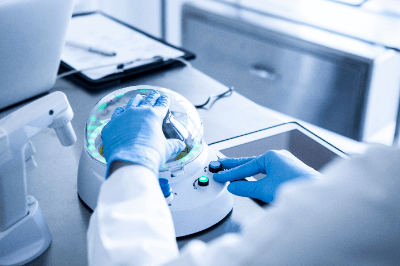What Is a Desktop Centrifuge?

A desktop centrifuge is a compact version of a standard centrifuge, designed for tabletop use. It uses centrifugal force to separate samples based on particle density. Desktop centrifuges vary in size and complexity, from simple models to those with functionalities akin to larger, floor-mounted units. They accommodate various types of vessels such as microplates, microtubes, test tubes, and centrifuge tubes.
Uses of Desktop Centrifuges
Desktop centrifuges are primarily used for scientific experiments in:
- Cell culture
- Blood separation (cells, serum, plasma)
- Biochemistry (DNA, RNA extraction)
- Analysis (liquid-liquid extraction)
They are essential in medical settings for immediate separation of plasma or serum post-blood collection.
Principle of Desktop Centrifuge
Desktop centrifuges function by applying centrifugal force to separate substances based on specific gravity differences. This process rapidly separates particles, which would otherwise settle more slowly due to gravity alone. The centrifuge uses a rotor to generate this force, separating substances within samples based on their densities.
Types of Desktop Centrifuge
Desktop centrifuges come in various types:
1. Small Size With Simple Structure and Functions
These centrifuges are used for basic operations like spin-downs and centrifugal filtration, accommodating small plastic test tubes.
2. Tabletop Model With Advanced Functions
Offer similar functionalities to floor-standing models but in a compact form. These models may include cooling and heating options and are compatible with a range of rotor types.
Other Information on Desktop Centrifuge
1. Relationship Between Rotation Speed and Centrifugal Force
Centrifugal force is proportional to the rotation radius and the square of the rotational speed. The conversion between g (gravity) and rpm (revolutions per minute) is essential for precise centrifugal operations.
2. Model Selection Based on Speed and Force Requirements
The selection of a centrifuge model depends on the specific gravity difference of the substances to be separated. Low-speed centrifugation suffices for cell or blood cell separation, while high-speed centrifuges are necessary for DNA/RNA extraction.
3. Precautions for Operation
Proper balance and container strength are crucial for safe centrifuge operation. Post-cooling drying is also important to prevent corrosion and ensure device longevity.